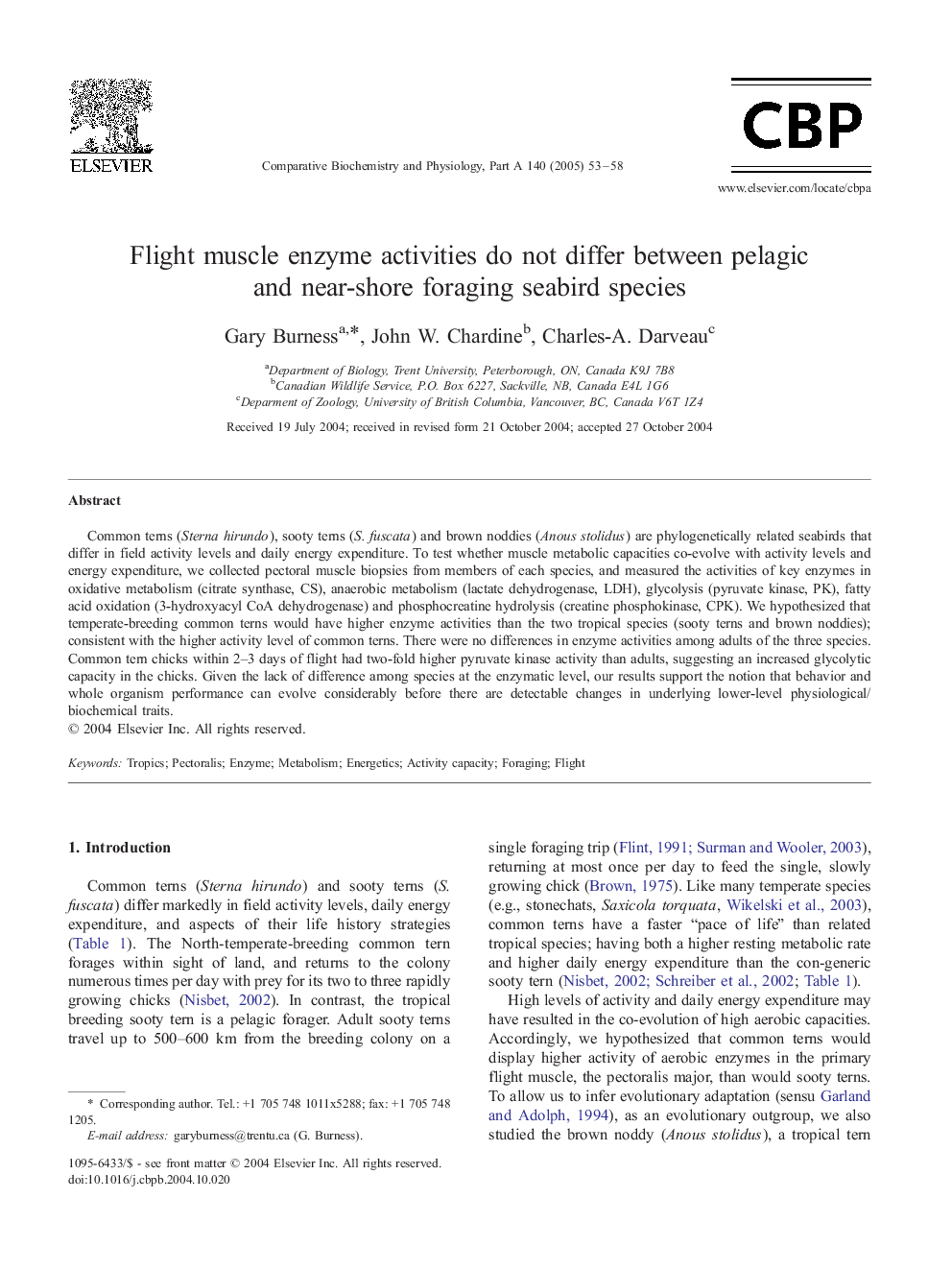| Article ID | Journal | Published Year | Pages | File Type |
|---|---|---|---|---|
| 10819231 | Comparative Biochemistry and Physiology Part A: Molecular & Integrative Physiology | 2005 | 6 Pages |
Abstract
Common terns (Sterna hirundo), sooty terns (S. fuscata) and brown noddies (Anous stolidus) are phylogenetically related seabirds that differ in field activity levels and daily energy expenditure. To test whether muscle metabolic capacities co-evolve with activity levels and energy expenditure, we collected pectoral muscle biopsies from members of each species, and measured the activities of key enzymes in oxidative metabolism (citrate synthase, CS), anaerobic metabolism (lactate dehydrogenase, LDH), glycolysis (pyruvate kinase, PK), fatty acid oxidation (3-hydroxyacyl CoA dehydrogenase) and phosphocreatine hydrolysis (creatine phosphokinase, CPK). We hypothesized that temperate-breeding common terns would have higher enzyme activities than the two tropical species (sooty terns and brown noddies); consistent with the higher activity level of common terns. There were no differences in enzyme activities among adults of the three species. Common tern chicks within 2-3 days of flight had two-fold higher pyruvate kinase activity than adults, suggesting an increased glycolytic capacity in the chicks. Given the lack of difference among species at the enzymatic level, our results support the notion that behavior and whole organism performance can evolve considerably before there are detectable changes in underlying lower-level physiological/biochemical traits.
Related Topics
Life Sciences
Biochemistry, Genetics and Molecular Biology
Biochemistry
Authors
Gary Burness, John W. Chardine, Charles-A. Darveau,
